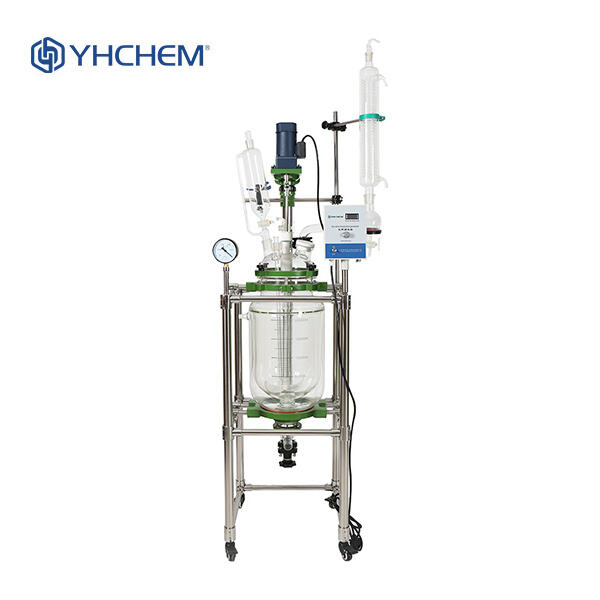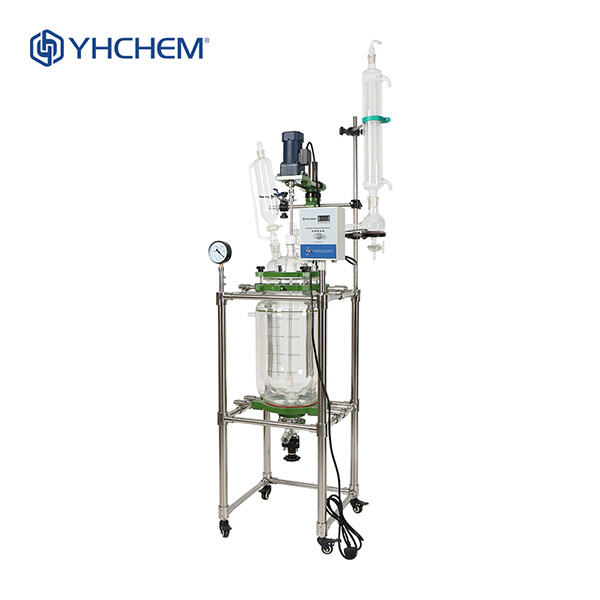Lab Jacketed Glass ReactorA jacketed glass reactor can do stirring reaction at high temperature and less than atmospheric pressure. The YHCHEM 20L glass reactor is a high quality glass instrument.
The 20l reactor is a big glass container with another glass container inside it, which is called jacket. This jacket allows fast-moving hot or cold fluids to circulate around the reactor, ensuring that its interior temperature is maintained at a constant level. The reactor also contains a stirrer to combine the stuff inside and a condenser to catch any resulting vapors.
Great reasons for using a 20L jacketed glass reactor There are several great reasons to use this type of jacketed glass reactor. It is applicable to many types of reactions, including mixing chemicals, extracting specific components from a mixture and isolating liquids. The jacket regulates temperatures, which is crucial in many tests. What’s more, the glass does not chemically react with the chemicals, keeping the results pure.

The 20L dual jacketed glass reactor is built to work for an efficient and precisely controlled reaction. The stirrer ensures that everything gets thoroughly mixed, and the jacket ensures that you keep the temperature just where you want it. — This makes experiments fast and results better. It also captures any vapors so that none escapes, which is safer for the user.

The20L jacketed glass reactor can be used in various fields of science. It can combine chemicals to create new ones. It can break apart the things you want, from a jumble, too. It is also capable of sorting liquids according to how hot they become.

When you use a 20L jacket glass reactor, you may be choosing the right equipment to determine the success of your specific laboratory experiments. Other common implements are heat and cool baths to control reaction temperature, and air evacuation systems that remove air and gases from reaction matrices. It can also be useful to have a variety of glass containers, such as flasks and beakers, with which to carry out different experiments.”